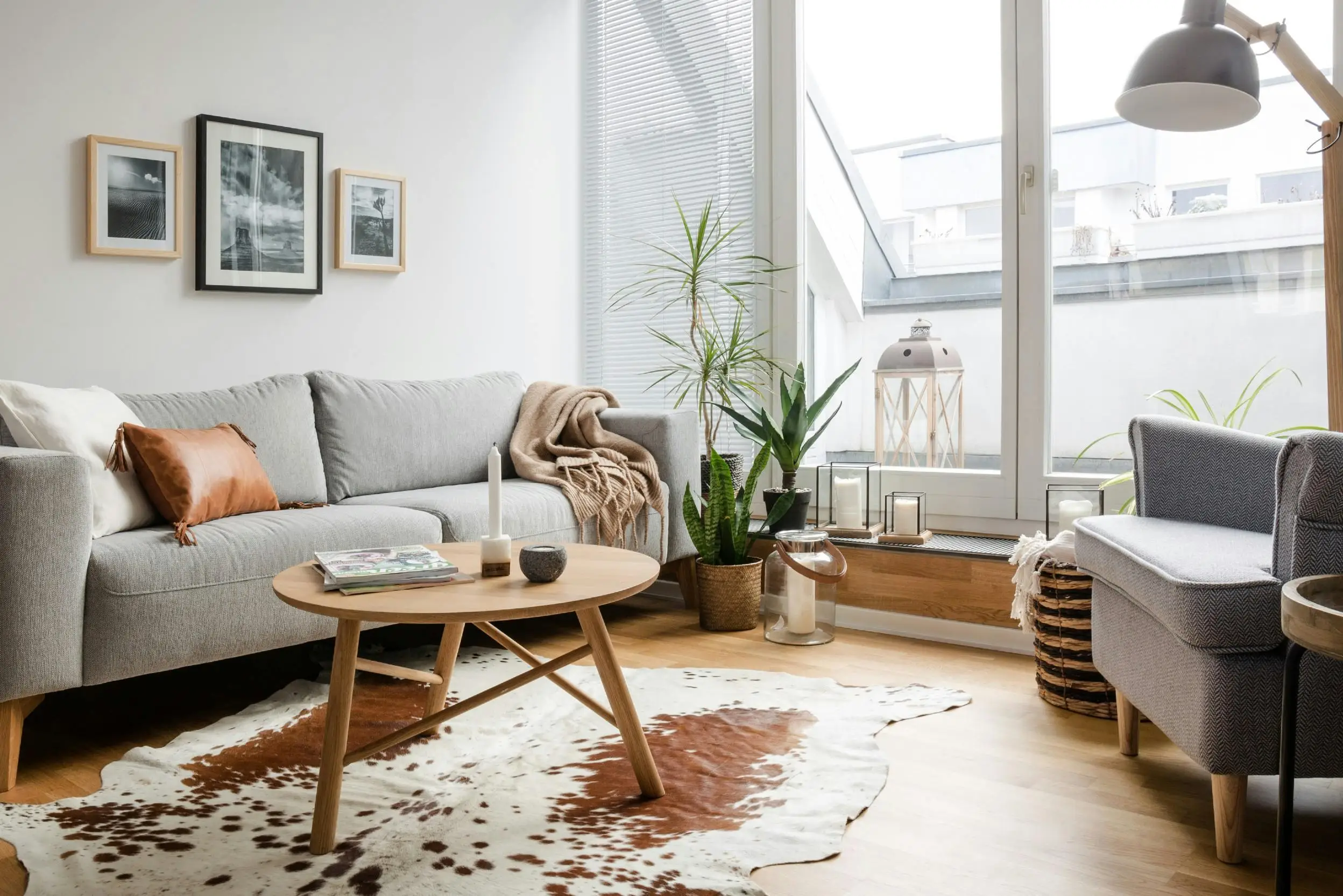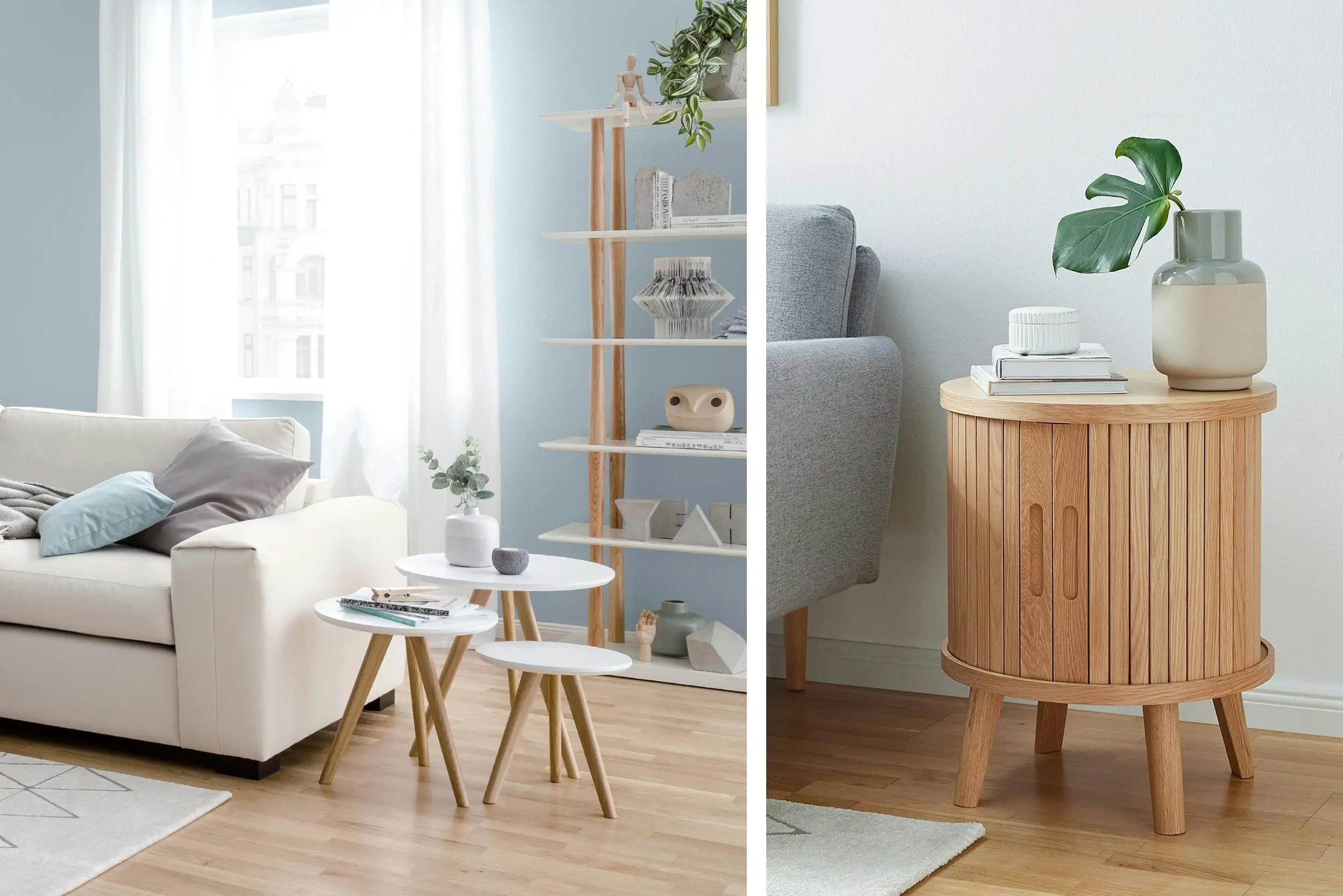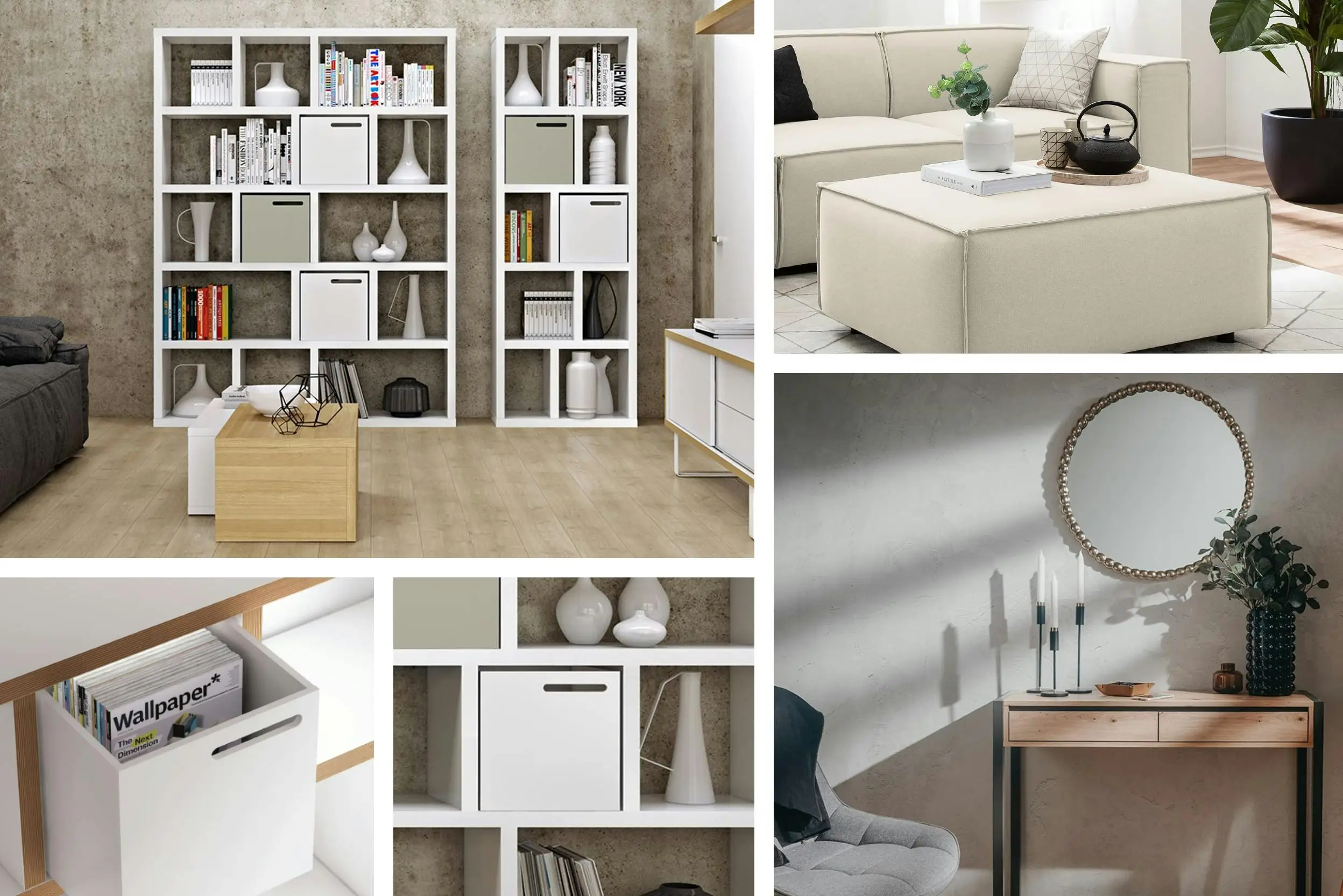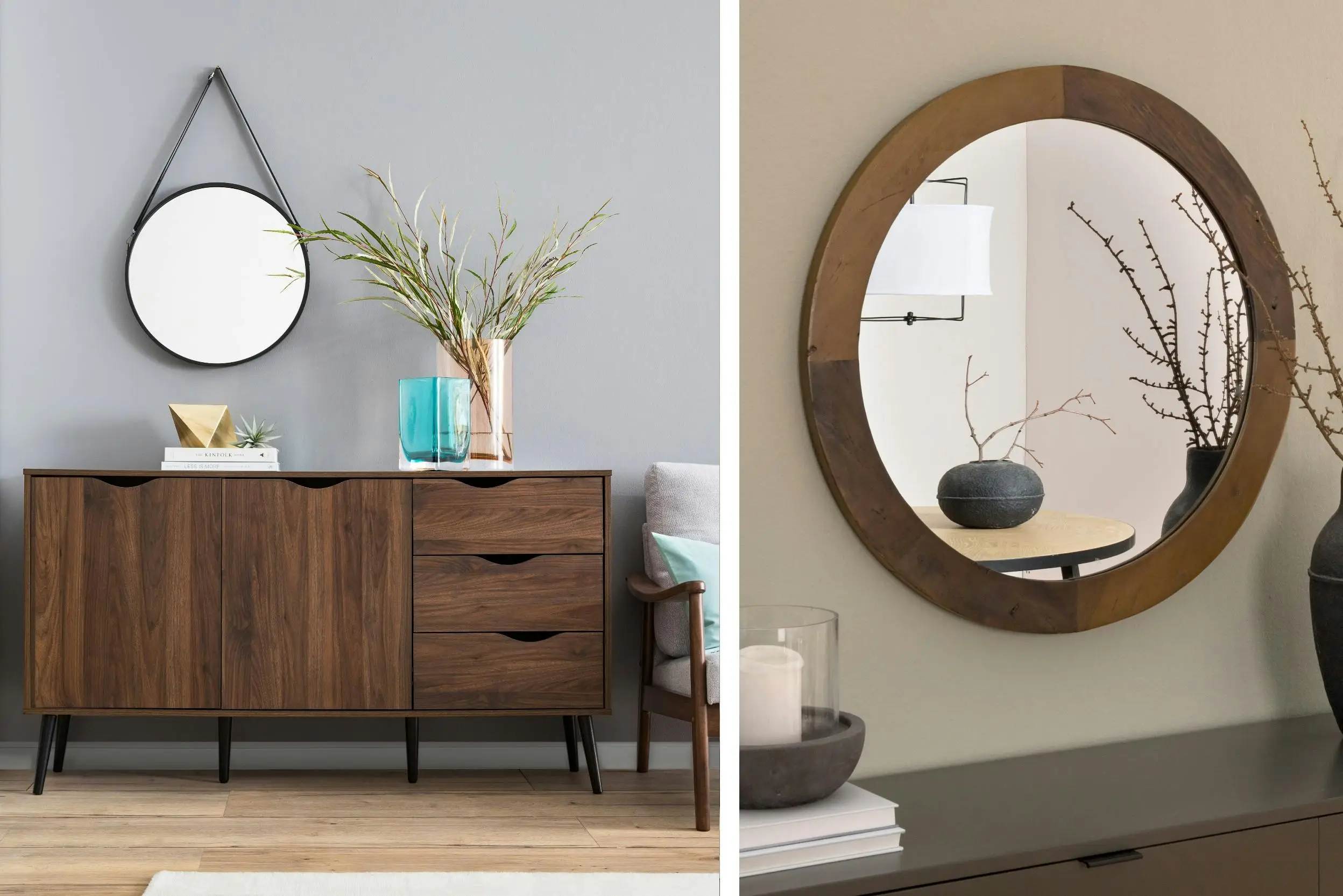The living room is the heart of your home. This is where you spend most of your (waking) time, where you relax, and where the whole family comes together. But what do you do when you don’t have as much space as you’d like? We’ll give you ideas on how to furnish and design a small living room so that it doesn’t feel cramped.
In this article, you’ll get inspiration to visually enlarge your small living room and learn how to create additional space with the right furniture.
1. Keep the Room Bright

Light colors make small rooms appear larger. So opt for soft, subtle tones like white, beige, and cream to create a monochromatic living room. This makes the room lighter, brighter, and less oppressive. You can complement this with wood for a natural and harmonious effect. Of course, you can always round it off with individual accents in bold colors or shiny metals to add some flair.
2. Small Living Rooms Need Small Furniture

When selecting your living room furniture, avoid bulky pieces. An oversized sectional sofa might look excessive and visually overload the room. Shelves, coffee tables, armchairs, and other items should not be too expansive either. Keep the proportions in mind.
Small rooms call for small sofas. The only way to fit a really large sofa is to deliberately make it the focal point and coordinate it with the room. Position corner sofas or sectionals so that you look into the open side when entering the room – this creates an inviting effect.
3. Choose Furniture with a Slim Silhouette
Building on the previous tip: Delicate, graceful forms work better in a small living room as they create an impression of lightness. Choose sofas and armchairs with a slim silhouette. The Scandinavian style offers many such pieces, like a sideboard on slender legs or slim coffee and side tables. Transparent tables made of glass or plexiglass also contribute to openness and make the room appear more spacious.
Wire chairs or trendy rattan chairs create an even airier feel. The trick: Their permeable structure allows your gaze to pass through. This way, they don’t block the view and appear more subtle.
4. Leave Free Space
Minimalism is one of the top virtues when furnishing a small living room. Make sure you don’t overload the available space. Leave empty floor space and, when in doubt, leave out a piece of furniture.
The same applies to the wall: Limit yourself to a few pictures and/or elements and leave plenty of space around them. For this reason, a low sideboard is a good choice along one wall, as all the free space above it makes the small room appear more spacious.
If your living room also has a low ceiling: A portrait-oriented picture visually stretches the room.
5. Utilize Height

“Yes, but where am I supposed to put all my things?” you might be asking yourself now. Don’t worry, because a bookshelf definitely still belongs in the living room. And you can really make good use of it. If you have many things to store, opt for a tall shelf that reaches up to the ceiling, which you can arrange decoratively and with variety. Small items disappear into storage boxes, which helps maintain order.
It’s best to place the shelf on a side wall that doesn’t catch the eye immediately. This way, you combine both: the free spaces from tip 4 and the possibility of creating storage space in your small living room.
Also useful for additional storage in a small living room: wall boards that you can mount up high, for example above the door.
6. Multi-functional Furniture
You don’t have much space, so your selected furniture should be able to serve multiple purposes. Console tables are particularly recommended: they’re not very deep, offer surface area for items, sometimes include drawers, and can function as a desk or vanity.
Upholstered ottomans can take on the function of a coffee table—or provide additional seating when needed. Or you can add a storage bench to your furnishings, in which you can store many items and also seat a guest on top.
A sofa bed or functional sofa is your clever all-rounder—it not only provides comfortable sleeping accommodations for guests but often also includes practical under-seat storage for blankets and other items.
7. Optical Illusions
Horizontal stripes make things look wider—what’s usually undesirable in fashion can be useful when designing small spaces. Stripes or borders on the wall can make your small living room appear wider. You can also visually raise low ceilings by painting a wall in color and leaving a white strip at the top. Another tip for this is vertically striped wallpaper.
Furthermore, horizontally striped rugs are a good way to visually lengthen rooms. The perspective effect makes the eye believe the room is longer than it actually is.
8. Use Light Strategically
With the right lighting, you can also make a small living room appear visually larger. First of all: choose modest, slim lamps rather than overly eye-catching models, similar to the furniture (see tip 2).
Indirect lighting is the method of choice for visually expanding a room. You can achieve this through background lighting, concealed LED strips, wall lights, or shelf lighting. The trick: a room looks larger when its walls are gently illuminated.
Additionally, you should opt for multiple light sources that you use flexibly. For example, when reading, you can have a floor lamp next to the sofa and keep the rest of the room rather dark—by not making everything visible at once, the room appears larger.
9. Install Mirrors

We know this design trick from supermarket refrigerated sections: mirrors create the illusion of additional space where there isn’t any. Another effect: by reflecting light, they bring more brightness into the room without additional lighting. It’s best to hang the mirror opposite the window or on the wall to the side of it, so it can capture light and reflect it back into the room.
10. Less is More
This advice is probably the quintessence of furnishing small living rooms: exercise restraint to avoid overloading the space. This applies to furniture pieces, but also to decorations: better to decide on a few (color-coordinated) favorite pieces and showcase them properly. And when in doubt: get rid of it. This way, you can continually reinvent your space.
